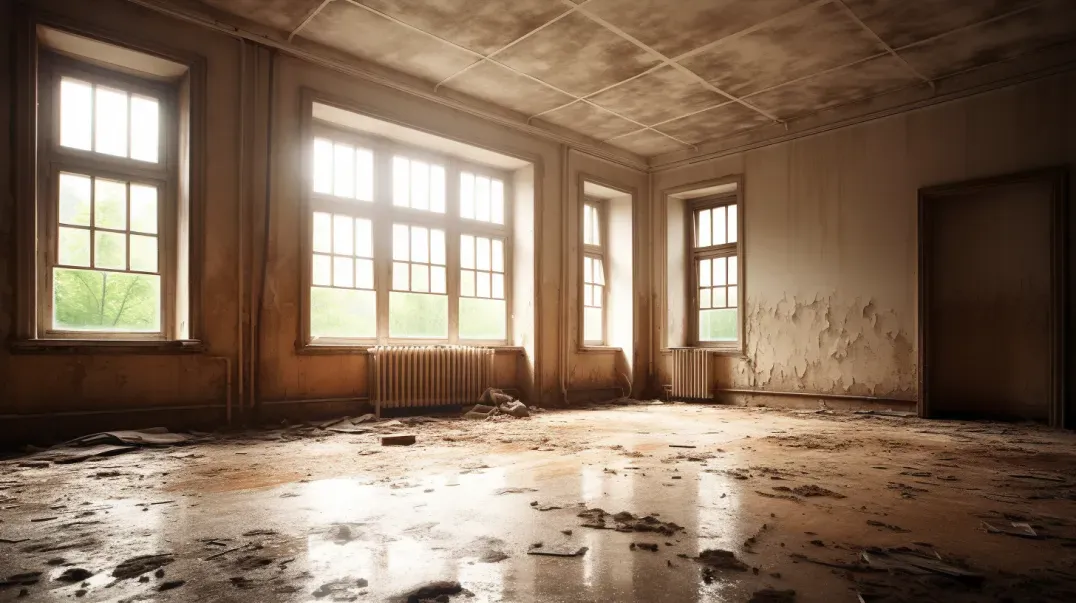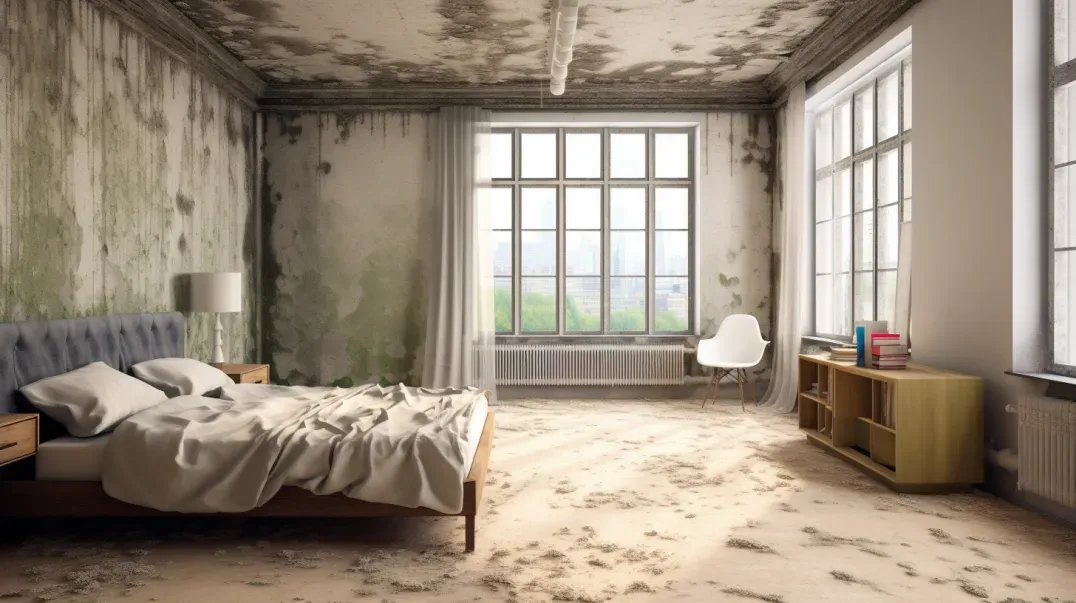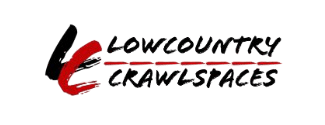The Impact of Climate Change on Household Mold
In recent years, the conversation around climate change has intensified, focusing on its widespread impacts on weather patterns, ecosystems, and global temperatures. However, one of the less discussed but equally significant effects of this global phenomenon is its influence on mold growth within our homes. This blog post delves into the intricate relationship between climate change and the increasing prevalence of mold in residential areas, shedding light on why this issue is becoming more common and what homeowners can do to protect their living spaces.
As global temperatures rise and weather patterns become more erratic, many regions are experiencing increased humidity levels and more frequent and severe flooding events—conditions that mold thrives in. The result is a growing challenge for homeowners and residents, as mold not only poses health risks but also affects the structural integrity of homes. Through expert insights and the latest research, we explore how climate change is creating a more conducive environment for mold growth and what implications this has for residential health and safety.
Understanding the connection between climate change and mold growth is crucial for developing effective strategies to combat this issue. From preventative measures to innovative solutions, this post aims to equip homeowners with the knowledge and tools needed to address mold growth proactively in the face of a changing climate. Join us as we navigate the complexities of this emerging challenge, offering guidance and support to those looking to safeguard their homes and health against the encroaching threat of mold in an era of climate change.
Understanding the Basics of Mold Growth
Mold is a common concern for homeowners, capable of not only damaging property but also posing health risks. Understanding the basics of mold growth, including the conditions that favor its proliferation and the common types found in homes, is essential for effective prevention and management. This section aims to demystify mold growth, providing a foundation of knowledge that homeowners can use to protect their homes and health.
Conditions Favoring Mold Growth
Mold thrives in specific environments, primarily where moisture, suitable temperatures, and organic material are present. Understanding these conditions can help in creating strategies to minimize mold growth:
- Humidity: High humidity levels offer the perfect moisture condition for mold spores to start growing. Indoor humidity levels above 60% can significantly increase the risk of mold formation.
- Temperature: Most molds grow optimally in temperatures similar to what humans find comfortable, between 60°F and 80°F (15°C to 27°C). This makes residential environments particularly susceptible to mold growth.
- Organic Material: Mold requires organic material to feed on. In homes, this can include wood, drywall, carpet, and even dust.
By controlling these factors, especially moisture levels within the home, you can significantly reduce the likelihood of mold growth.
Common Types of Household Mold
Several types of mold commonly occur in homes, each with its own characteristics and potential health effects. Here's a brief overview of the most prevalent types:
- Aspergillus: Often found on food and in air conditioning systems, Aspergillus can cause allergic reactions and respiratory infections.
- Cladosporium: This mold grows on fabrics, woods, and other damp, porous materials. It can trigger allergic reactions and asthma.
- Stachybotrys Chartarum (Black Mold): Known for its black appearance, this mold grows on water-damaged, cellulose-rich materials. It's notorious for producing mycotoxins that can cause serious health issues, including breathing difficulties and allergic symptoms.
- Penicillium: Commonly found on materials damaged by water, Penicillium can spread quickly and cause allergies and asthma.
Recognizing these molds and understanding the conditions they thrive in can help homeowners identify potential mold issues early and take corrective action.
Climate Change and Its Environmental Impact
The phenomenon of climate change represents one of the most pressing challenges of our time, with far-reaching impacts on our planet's weather systems and ecosystems. As global temperatures continue to rise, we are witnessing significant shifts in weather patterns and an increase in humidity and precipitation events. This section explores how climate change is altering our environment, focusing on the changes in weather patterns and the implications of increased humidity and precipitation.
Shifts in Weather Patterns
Climate change is fundamentally altering weather patterns across the globe, leading to more extreme and unpredictable weather. These shifts include:
- Increased Temperature Extremes: Both hot and cold temperature extremes are becoming more frequent, with heatwaves becoming more common and intense.
- Altered Precipitation Patterns: Many areas are experiencing changes in rainfall patterns, leading to prolonged droughts in some regions and increased flooding in others.
- Intensification of Storms: There is evidence that hurricanes and tropical storms are becoming more intense, with higher wind speeds and greater precipitation, attributed to warmer ocean temperatures.
These changes in weather patterns have profound implications for agriculture, water resources, and human health, necessitating urgent adaptation and mitigation strategies.
Increased Humidity and Precipitation
Another significant impact of climate change is the trend towards higher humidity and more frequent precipitation events. This trend is driven by the fact that warmer air can hold more moisture, leading to:
- Higher Humidity Levels: Increased evaporation rates and the ability of warmer air to hold more moisture contribute to higher humidity levels, affecting human comfort and health, and increasing the risk of mold and mildew in buildings.
- More Frequent Precipitation Events: The increased moisture in the atmosphere is also contributing to more frequent and intense rainfall and snowfall events, exacerbating the risk of flooding and waterlogging in many regions.
The rise in humidity and precipitation has significant environmental, economic, and social impacts, including challenges in managing water resources, agriculture, and infrastructure resilience.
Direct Effects of Climate Change on Household Mold
As the planet warms, the effects of climate change are becoming increasingly evident, not just in the natural environment but also within the very walls of our homes. One of the less discussed but significant impacts of climate change is its influence on mold growth in residential areas. This section explores how rising humidity levels and increased flooding are creating conditions ripe for mold proliferation, posing new challenges for homeowners in maintaining healthy living spaces.
Rising Humidity Levels in Homes
Climate change is leading to increased outdoor humidity levels in many regions around the globe. This uptick in humidity doesn't stay outside; it seeps into our homes, creating the perfect environment for mold to thrive. Here's how this process is unfolding:
- Increased Outdoor Humidity: As global temperatures rise, the air's capacity to hold moisture increases, leading to higher humidity levels. This excess moisture can enter homes through ventilation, doors, and windows, or even diffuse through building materials.
- Consequences for Indoor Humidity: Once inside, this moisture can significantly raise indoor humidity levels, especially during warmer months. Homes without adequate ventilation or dehumidification systems are particularly at risk.
- Impact on Mold Growth: Mold spores, which are always present in the air, find these moist conditions ideal for growth. This can lead to an increase in mold colonies on walls, ceilings, and other surfaces, contributing to health problems and structural damage.
Increased Flooding and Water Damage
Another direct effect of climate change on household mold is the increase in frequency and severity of flooding events. Extreme weather patterns, including heavier rainfall and hurricanes, are becoming more common, leading to flooding that can wreak havoc on homes:
- Flooding and Mold: Flooding introduces large amounts of water into homes, saturating walls, floors, and furniture. Even after the floodwaters recede, the lingering moisture provides a fertile ground for mold growth.
- Challenges in Remediation: The cleanup and drying process after a flood are critical in preventing mold. However, the scale of flooding and the speed at which mold can grow often outpace homeowners' ability to address the moisture, leading to widespread mold issues.
- Long-Term Implications: The repeated exposure of homes to floodwaters not only increases the immediate risk of mold growth but can also compromise the building's ability to resist future mold outbreaks, creating a cycle of damage and repair.
The direct effects of climate change, including rising indoor humidity levels and increased flooding, are amplifying the challenge of controlling mold growth in homes. Understanding these impacts is the first step in developing strategies to protect our living spaces from the adverse effects of a changing climate.
Indirect Effects of Climate Change on Mold Growth
While the direct impacts of climate change on mold growth, such as increased humidity and flooding, are widely recognized, the indirect effects are equally significant but often less apparent. These indirect effects, including structural vulnerabilities and challenges in mold detection and remediation, underscore the complex relationship between climate change and residential mold growth. This section delves into how climate change-induced weather events are reshaping the landscape of mold management in homes, presenting new challenges for homeowners and professionals alike.
Structural Vulnerabilities
Climate change is intensifying weather events like hurricanes, heavy rains, and even droughts, each of which can leave homes more susceptible to mold growth. Here's how these events indirectly affect mold proliferation through structural vulnerabilities:
- Weather-Related Damage: Extreme weather can damage roofs, windows, and foundations, creating entry points for moisture. Over time, even small breaches can lead to significant moisture intrusion, providing a foothold for mold.
- Material Degradation: Fluctuating temperatures and increased precipitation can accelerate the degradation of building materials. As materials break down, they become more susceptible to moisture penetration and retention, creating ideal conditions for mold.
- Insulation and Ventilation Issues: Climate change may necessitate changes in insulation and ventilation strategies to cope with more extreme temperatures. However, if not properly designed, these changes can trap moisture inside homes, further exacerbating mold problems.
Challenges in Mold Detection and Remediation
The changing climate also introduces new challenges in detecting and remediating mold. As weather patterns shift and new types of structural vulnerabilities emerge, homeowners and remediation professionals face several obstacles:
- Detection Difficulties: The indirect effects of climate change can lead to mold growth in unexpected places, making detection more challenging. Homeowners may overlook mold in less obvious locations until it becomes a significant problem.
- Remediation Complexities: Remediation efforts may be complicated by the increased frequency and severity of mold infestations. Traditional remediation methods may need to be adapted to address the unique challenges posed by climate-induced mold growth.
- Preventative Measures: Implementing effective preventative measures becomes more complex as the climate changes. Homeowners must consider a wider range of potential vulnerabilities and adapt their mold prevention strategies accordingly.
The indirect effects of climate change on mold growth highlight the need for heightened awareness and innovative approaches to mold management. By understanding these challenges and taking proactive steps to address them, homeowners can better protect their homes and health from the insidious threat of mold in a changing climate.
Preparing Your Home for Climate-Induced Mold
As the impacts of climate change become increasingly evident, one of the critical challenges homeowners face is the heightened risk of mold growth due to changing weather patterns and increased humidity. Preparing your home to combat these risks is essential for maintaining a healthy living environment and protecting your property. This section offers practical strategies for enhancing home ventilation and waterproofing and insulating your home, providing a comprehensive approach to mold prevention in the face of climate change.
Enhancing Home Ventilation
Proper ventilation is crucial in managing indoor humidity levels and preventing mold growth. As homes become more airtight to improve energy efficiency, the ability to control moisture and ensure adequate air circulation becomes increasingly important. Here are strategies for improving ventilation:
- Use Exhaust Fans: Install and use exhaust fans in high-moisture areas such as bathrooms, kitchens, and laundry rooms. Ensure they vent directly outside to remove moist air effectively.
- Improve Natural Ventilation: Whenever possible, open windows and doors to allow fresh air to circulate throughout your home, reducing humidity levels and diluting indoor air pollutants.
- Consider Whole-House Ventilation Systems: For homes in particularly humid climates or with limited natural ventilation options, a whole-house ventilation system can provide controlled and consistent air exchange, reducing the risk of mold growth.
Waterproofing and Insulation
Protecting your home from moisture intrusion is another critical step in preparing for climate-induced mold. Waterproofing and proper insulation can significantly reduce the risk of moisture buildup and mold growth. Here are tips for effective waterproofing and insulation:
- Waterproof Basements and Crawl Spaces: Use waterproofing sealants on basement walls and floors. Ensure crawl spaces are properly ventilated or encapsulated to prevent moisture accumulation.
- Inspect and Repair Roof and Gutters: Regularly inspect your roof for damage and ensure gutters and downspouts are clear and effectively directing water away from your home's foundation.
- Upgrade Insulation: Use moisture-resistant insulation materials, especially in areas prone to dampness, such as exterior walls and attics. Proper insulation not only helps regulate indoor temperatures but also prevents condensation by reducing thermal bridging.
By implementing these ventilation, waterproofing, and insulation strategies, homeowners can significantly enhance their home's resilience to climate-induced mold. Taking proactive steps to address these areas can help ensure a healthier, more comfortable living environment, even as the climate continues to change.
FAQs
Contact Lowcountry Crawlspaces Today!
Lowcountry Crawlspaces will do everything we can to ensure your experience with us is excellent.
Request A FREE Estimate
CHECKOUT RECENT POST



Schedule Your FREE Crawl Space Evaluation Today
There Is No Crawl Space Job We Can’t Fix!




